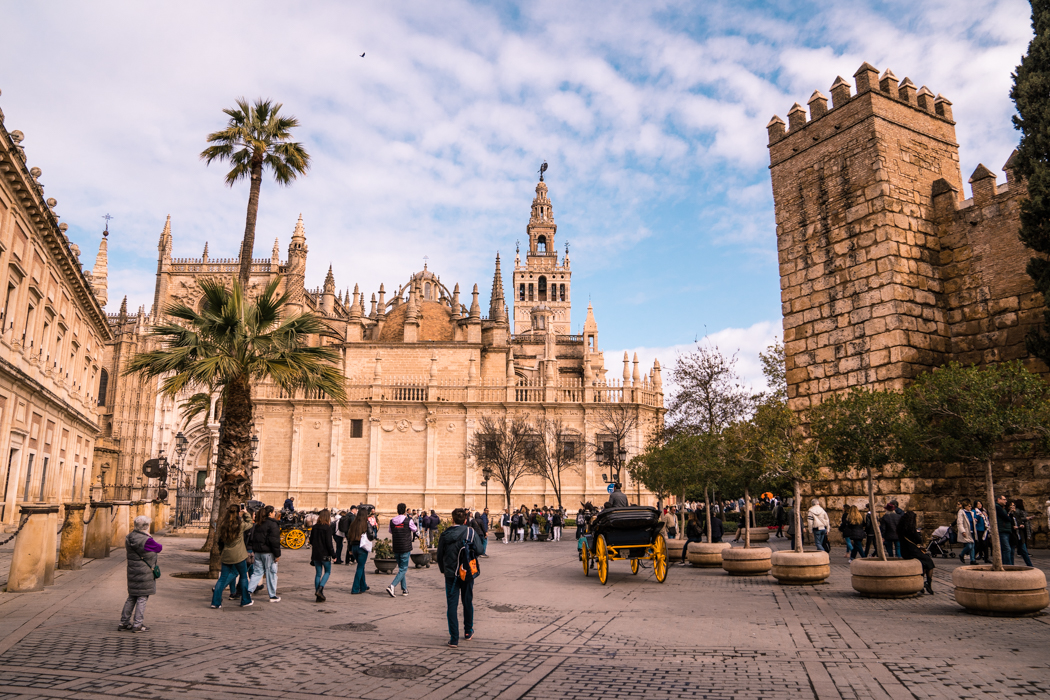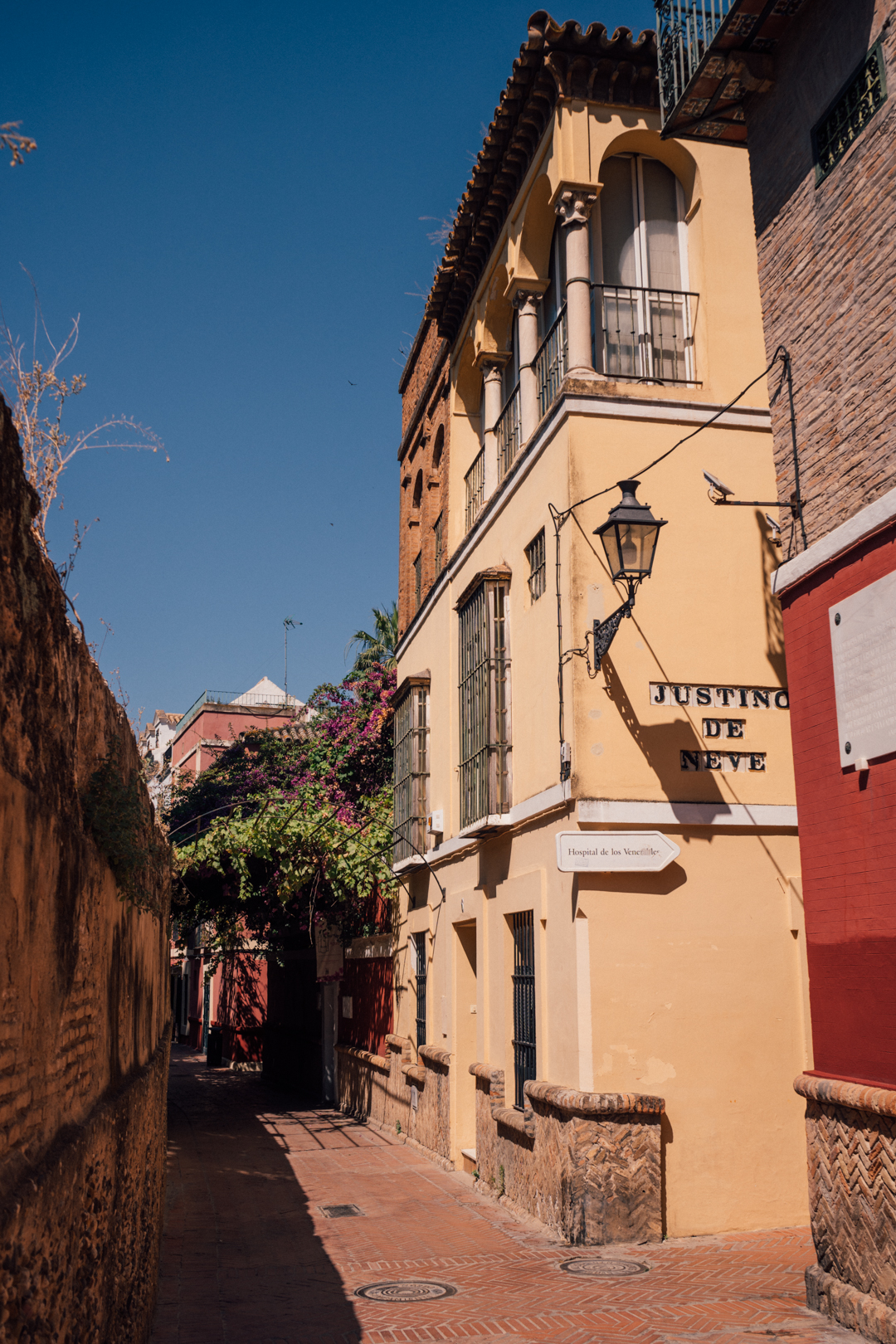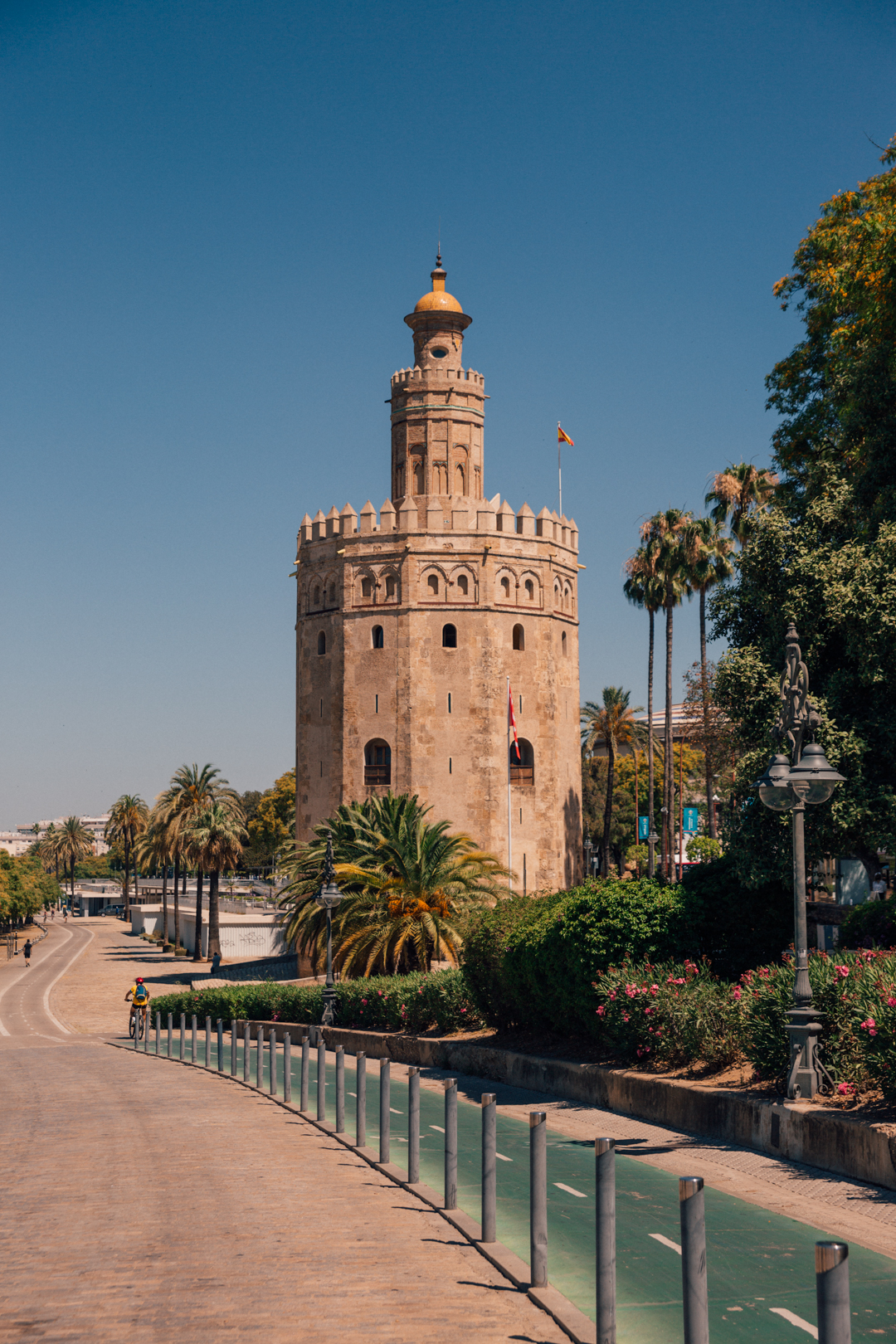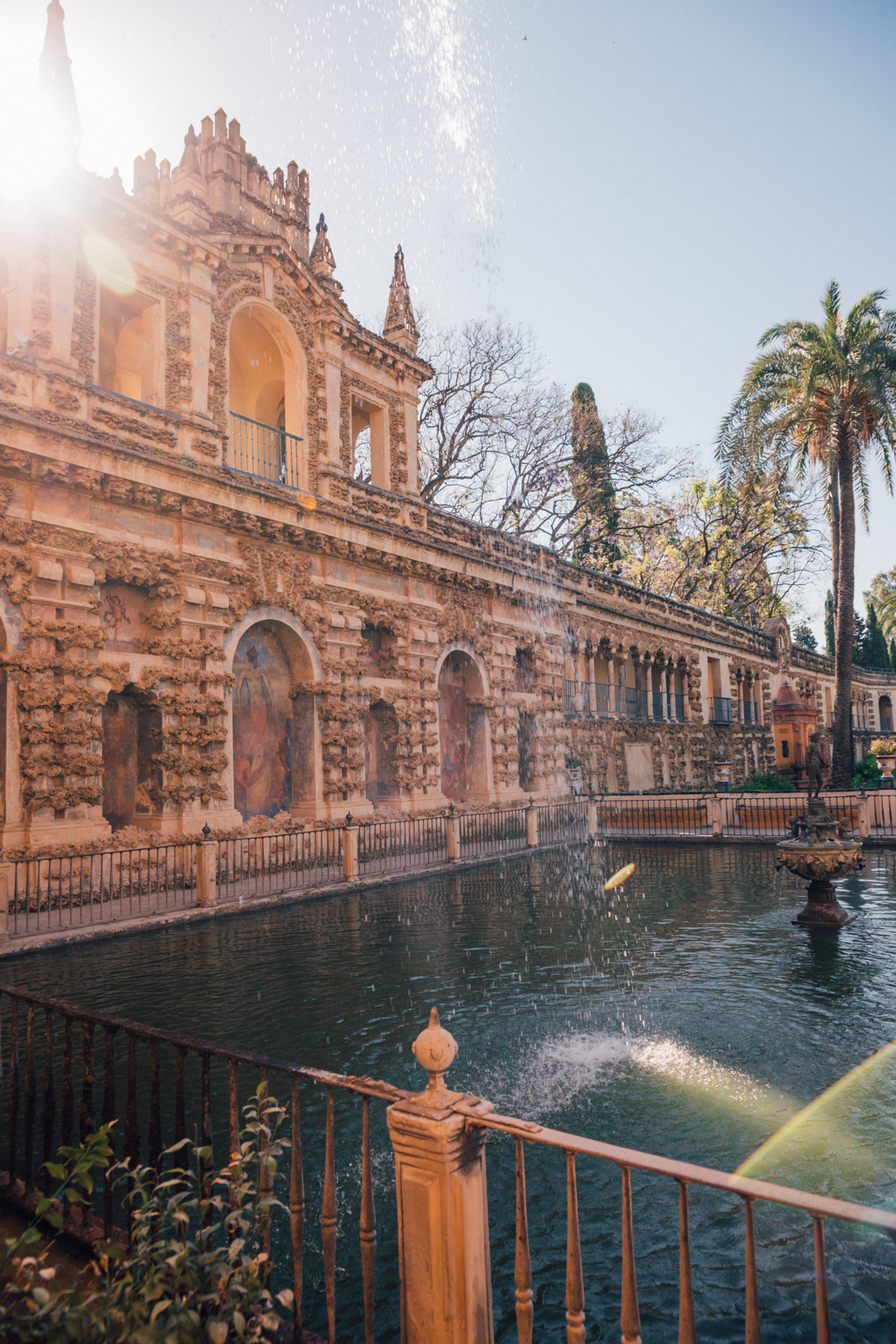Are you planning a trip from Alicante to Seville?
Whether you’re planning on booking a flight, or renting a car, this article will give you in-depth information about the best transport options between the two cities.
Best of all – as I live in Spain myself, I will also include lots of practical tips and advice that will help you plan the perfect trip.
Alicante to Seville Journey Overview
Alicante and Seville are located on opposite sides of Spain, and the distance between the two cities measures about 370 miles, or about 595 kilometers.
Available transportation options include taking the train, catching a bus, or renting a car and driving. Flying is an alternative to ground transportation.
Flying will generally be the fastest way to travel between cities in Spain, but it may not always be the most budget-friendly option.
Trains and buses will likely be cheaper, though the journey will take up most of your day. Renting a car will be pricy and the drive will take a couple of hours, but you’ll have much more flexibility in return.

Alicante to Seville Transportation Options
Here is an overview of the journey options followed by details on each one:
| Transportation Mode | Details |
|---|---|
| Alicante to Seville by Train | 6 to 7 hours, tickets from €41.90 one way |
| Alicante to Seville by Bus | 10 hours, tickets from €63 |
| Alicante to Seville by Car | 6 hours drive, cost of petrol & car rental |
| Alicante to Seville by Plane | 1 hour flight, from €25 one way |
1. Alicante to Seville by Train
Taking the train is one of the most popular ways to get around Spain. Spain’s main train operator, Renfe, offers daily rides between the nation’s cities, including Alicante and Seville.
Train rides from Alicante to Seville can take between 6.5 to 7.5 hours, depending on the departure you choose. They include one stop along the way, usually in Madrid, where you’ll have to change stations and catch a second train. Ticket holders will usually have at least an hour to change stations.
Train tickets for this route range anywhere from 40 euros to 114 euros for standard class, and higher for 1st class. The cheapest tickets are normally available if you book far in advance, at least two to four weeks.
The route between Alicante and Seville sees around 6 to 8 departures per day.
Due to the duration of the journey, the first trains leave pretty early, around 5.50 am and the last trains only leave in early afternoon, around 2.30 pm. There are no trains after this time and this route is not offered as a night train.
One of the easiest ways to book train tickets between Spanish cities is online, through services like Trainline. This site is accessible in English and you should be able to smoothly use a non-Spanish credit card to pay for the ticket.

Renfe does have its own website, but there have been reports of foreign users having technical issues while using it. The Renfe app or phone service is another booking option.
If you have more questions or want to talk to a representative, tickets can also be bought in person at train stations serviced by Renfe. Stations generally have ticket offices and/or self-service ticketing machines.
2. Alicante to Seville by Bus
Spain offers an efficient bus system that links its largest cities.
This will likely be slower than driving or taking the train, but may be a good idea for budget travelers, depending on whether you can find cheap tickets in advance.
As with train tickets, the further in advance you book your bus ride, the less you will end up spending. Alsa and Avanza are the most popular long-distance bus companies in the country, but only Alsa covers this route.
This bus route is only offered as a night bus, leaving from Alicante at 10.15 pm and arriving in Seville after 10 hour drive, at 8.25 am.
Please note the schedule is subject to change and it is accurate at the time of writing.
You can book your tickets directly with Alsa, or using Omio which I linked above.

3. Alicante to Seville by Car
If you have already rented a car for this trip, or planning to, this section will give you a brief overview of what the expect.
If you’re driving all the way to Seville, you can expect to spend at least 6 hours on the road, depending on the traffic conditions.
The best route suggested is via Murcia and Granada, so you might want to make a stop in either city to get a little break from driving.
The total distance covered by car will be close to 600 km, so you will also spend a considerable amount on petrol, not just car rental.
The map below outlines the suggested route.
Car Rental in Spain
If you’re looking for a good car rental company, I recommend checking Discover Cars.
They are a price comparison platforms that will source you price quotes from local companies, so you can compare all your options on one page.
Best of all – all the policies are clearly outlines, so there will be no unpleasant surprises when you come to pick up your car.
You can get a quick quote for your trip using the form below.
Driving in Spain
Driving in Spain is self- explanatory as most roads and highways are well-maintained and clearly marked. As in any location, abiding by the speed limit is crucial- you might need to get used to a new metric system, as the speed limit is in kilometers.
Be sure to pay attention to parking and vehicle- related signage, especially if you’re not used to reading rules in Spanish. Familiarize yourself with common regulations beforehand to avoid tickets. Many cities have resident and paid parking spots, so keep an eye out for both.

4. Alicante to Seville by Plane
An additional option for traveling between Alicante and Seville is to take a quick flight between the two.
RyanAir offers low-cost flights starting from 25 euros one way.
Nonstop flights take just over an hour, making this a fast way to travel.
There are three to four flights per week available, with schedule subject to change – usually in summer you will get more flights compared to the winter.
Flying can be a viable option when you’re in a pinch, but you have to factor in travel time to and from busy airports and security screening. The flight itself may be short, but getting in and out of the airport usually isn’t. Since flights between these two cities are infrequent, you’ll likely have to adjust your plans to account for flight schedules.
As usual, booking your flight in advance means lower prices. When it comes to flights, keep an eye on the weather, as planes are often more sensitive to storms and other weather conditions than ground transportation.

Traveling with Special Requirements
If you have special requirements or are taking a trip with someone who has them, you’ll likely want to make sure your trip will be as comfortable as possible ahead of time.
Disabled travelers, for example, can request a train station wheelchair by calling Renfe’s customer assistance hotline. Renfe also offers a service known as Adif Acerca, which provides physical assistance, information on traveling while disabled and guidance services around train stations. Many of Spain’s museums, historic sites and other attractions are accessible as well, meaning everyone can enjoy the best of each city.
If you’re traveling with little ones, look for deals on tickets. AVE trains, for example, offer discounts of up to 40% for children younger than 14. Children younger than 3 travel free of cost.
If you’re planning to bring your pet along, look for pet-friendly transportation options or consider the comfort of renting your own car. Many trains do allow pets on board, provided they have their own pet ticket. Buses and flights may have different rules, so be sure to do advance research. RyanAir, for example, does not allow traveling with pets unless they are service dogs.
Conclusion
While Alicante’s laid-back coastal vibe may seem worlds away from Seville’s busy center and grandeur, the two destinations mesh perfectly, giving you a full scope of what Spain has to offer.
Traveling between the two makes sense geographically and can make a great predecessor to visiting a city further north, like Madrid.
Whether you travel by high-speed train, air, bus, or drive in a rented car, be sure to enjoy the journey in between as much as you do each city.
Explore Seville
Palacio De La Condesa De Lebrija: The Mosaic Palace of Seville
The Church of El Salvador of Seville
Casa de Salinas: Seville’s Finest Private Palace Residence
Seville Cathedral Tickets: Best Tips To Save Money & Time
Buy Seville Alcazar Tickets: Expert Insider Tips
20 Best Day Trips from Seville: Complete Guide by a Local
Disclaimer: This post contains affiliate links – if you decide to book using one of the links, I will earn a small commission that helps me run this site. This is at no extra cost to you.



